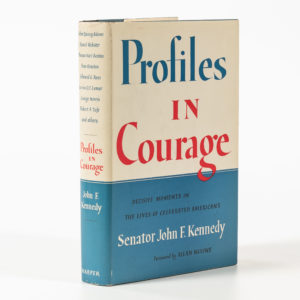
Printed books have been around for hundreds of years. They were scarce and expensive until the 1840s, when the steam-powered rotary printing press, fed with huge, continuous rolls of paper, enabled the production of millions of pages a day. Growing numbers of people in North America and Europe were literate. Many had money to spare for books and leisure time to read them.
Plenty of books remain in American homes today. Some are frequently consulted. Others are eagerly read and reread ”“ despite the trend to all things digital. But what about all the volumes that just sit there on the shelves, unopened for years?
Is it possible to tell which old books might be worth a hefty sum and which ones can be given away ”“ if you can find a person or organization that will accept them? Whether you yourself are downsizing or moving, or helping a family member to do so, the bookshelves may be worth a closer look.
Focus on first editions by well-known modern American writers ”“ Ernest Hemingway, F. Scott Fitzgerald, William Faulkner, James Baldwin, Edith Wharton and the other icons from your high school and college literature classes. Look at early editions of nonfiction as well.
John Dorfman, book expert at Bonhams Skinner, notes that there”™s a brisk market for fine books by great midcentury authors. But not all copies of, say, Ernest Hemingway”™s “The Sun Also Rises” or John Steinbeck”™s “The Grapes of Wrath” are created equal.
Value in vintage books depends on several factors. One is visible before turning a single page. It may be true that you can”™t tell a book by its cover. It”™s equally true that often you can tell the value of a book by its paper dust jacket or dust cover. The presence of the original dust jacket, in good condition, can make the difference between a few dollars and several thousand.
Dorfman points out that at their best, dust jackets are important aesthetic and cultural artifacts. A prime example is painter Francis Cugat”™s brilliant Art Deco cover for Fitzgerald”™s “The Great Gatsby,” which captures the disembodied, heavily-made-up eyes and lips of a flapper ”“ the irises of the eyes containing two tiny female nudes ”“ looming over the carnival-like atmosphere of New York City. The intentionally garish artwork crystallizes much of the underbelly of the Roaring ”™20s and the American Dream at the heart of Fitzgerald”™s elegiac novel. The author himself, who saw the dust jacket artwork before he”™d finished the book, recognized its artistry and force and indeed made some changes to the book suggested by the designer”™s imagery.
This extremely rare, beautiful dust jacket is in a class by itself in terms of monetary value. But even with less iconic covers, for most modern and contemporary books the presence of the original paper cover is so important that in most cases “no jacket means no sale.
There are other factors besides dust jackets to consider. A first edition, first printing of a book by an important author can have considerable value, even without a dust jacket. That”™s especially true if the first printing were small. This information is usually printed on the back of the title page.
Another potential boost to value, particularly a book by a well-known author, is the author”™s signature or, even better, personal inscription. Spoiler alert: It takes an expert eye to detect faked or prank signatures and inscriptions.
The last word is ”“ investigate. Age isn”™t especially important to book value. Demand, scarcity and condition are what really matter.
If you think there may be literary treasure on those library shelves, contact book specialist John Dorfman John.Dorfman@BonhamsSkinner.com to learn the rest of the story. And for more, contact Katie at katie.whittle@bonhamsskinner.com or 212-787-1114.



















